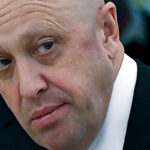
Rwanda’s army “engaged in military operations” against DR Congo’s military in the country’s troubled east, according to a report by a group of independent United Nations experts seen by AFP on Thursday.
The experts said there was “substantial evidence” that the Rwandan army directly intervened in Congo’s fight against M23 rebels, and that it had supported the group with weapons, ammunition and uniforms.
The report comes as the Democratic Republic of Congo has repeatedly accused Rwanda of backing the M23.
The militia has captured swathes of territory in the DRC’s restive east since it emerged from dormancy late last year.
Current frontlines lie just 20 kilometres (12 miles) from Goma, a commercial hub of over one million people.
Rwanda has repeatedly denied that it supports the rebels, but the United States and France, among other Western countries, have agreed with the DRC’s assessment.
According to the UN experts’ report, Rwanda’s military intervened to “reinforce” the M23 as well as to combat the Democratic Forces for the Liberation of Rwanda (FDLR) — a descendant of Rwandan Hutu extremist groups that carried out the 1994 Tutsi genocide in Rwanda.
Rwanda provided troop reinforcements to the M23 “for specific operations, in particular when these were aimed at seizing strategic towns and areas,” the report added.
Rwandan troops also led joint attacks with M23 fighters against Congolese positions in May, according to the report.
The 236-page document for the UN Security Council is expected to be published in the coming days.
– Diplomatic crisis –
A Tutsi-led militia, the M23 first leapt to international prominence when it captured Goma in 2012, before being driven out and going to ground the following year.
But it re-emerged in late 2021 after the rebels claimed the DRC had ignored a promise to integrate them into the army, and has made significant advances.
A watershed moment came when M23 fighters captured the stategic town of Bunagana on the Ugandan border in June.
A fresh offensive in late October saw the M23 capture swathes of territory in North Kivu, displacing hundreds of thousands of people.
The rebels’ battlefield successes have sent relations between the DRC and neighbouring Rwanda into a nosedive.
Several diplomatic initiatives have been launched in a bid to ease tensions, with the seven-nation East African Community (EAC) also deciding to deploy a military force to eastern DRC.
Talks between the DRC and Rwanda in the Angolan capital Luanda unlocked a truce agreement on November 23.
Under it, the M23 was meant to lay down arms then pull back from occupied territories.
But clashes with M23 continued.


Kinshasa subsequently accused the M23 of massacring civilians in the village of Kishishe.
A preliminary UN probe found that the M23 killed at least 131 civilians in the area.
On Wednesday, Rwanda said allegations of a massacre were a “fabrication.” It said the incident involved clashes between the M23 and Kinshasa-allied militias.
– Militia shift –
Armed groups — of which there are over 120 in eastern DRC — have taken the fight to the M23 in recent weeks.
M23 combatants clashed with the APCLS militia in North Kivu on Thursday, for example.
According to the UN experts’ report, the M23’s resurgence caused local militias to “shift alliances,” creating “new dynamics” with the Congolese military.
The experts cited evidence that Congolese troops had fought alongside armed groups — including the APCLS and the FDLR — in their struggle against the M23.
Rwanda has repeatedly accused Kinshasa of backing the FLDR.
The UN experts recommended that the DRC “take all measures” to prevent cooperation between the Congolese military and armed groups.
They likewise urged Congo’s neighbouring states to “prevent the provision of support” to armed groups within the vast nation of 90 million people.
ah-eml/ri




